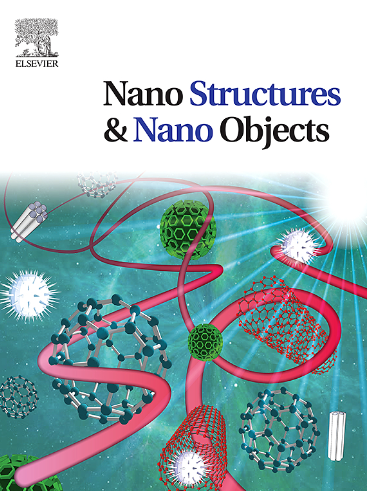Synthesis and characterization of nano-hydroxyapatite from carbide lime waste through a green conversion approach
IF 5.45
Q1 Physics and Astronomy
引用次数: 0
Abstract
Annually, a substantial quantity of industrial waste is generated globally, and the build-up of this waste poses a serious risk to society. The generation of carbide lime waste as a byproduct during acetylene gas production in industries has resulted in many environmental issues. This study attempts to convert carbide lime waste into nanohydroxyapatite (nHAp) that can be used to treat patients suffering from orthopaedic injuries. The synthesis of nHAp from carbide lime was carried out by chemical precipitation method using 85 % orthophosphoric acid. The resulting nHAp was physicochemically characterized by different instruments. Fourier Transform Infrared Spectroscopy (FTIR) was used to analyze the functional groups to confirm the conversion of carbide lime. The structural analysis of the synthesized nHAp was done by X-Ray Diffractometer (XRD). Field Emission Scanning Electron Microscopy (FESEM) was used to find the morphology of nHAp particles. The elemental composition of nHAp was studied by Energy Dispersive X-ray Spectroscopy (EDX). The hydrodynamic size of nHAp was calculated by the nano-zeta sizer instrument. Thermo Gravimetric Analyzer (TGA) studied the thermal behaviour of nHAp and carbide lime. Further, mechanical testing was carried out for nHAp using the Vickers microhardness test. In vitro tests, such as biodegradation and cell viability, were also conducted. As a result, the nHAp was found to be biocompatible and biodegradable. In the future, this nHAp biomaterial can be modified for different biomedical applications.
绿色转化法合成纳米羟基磷灰石的研究
每年,全球都会产生大量的工业废物,这些废物的积累对社会构成严重威胁。工业乙炔气生产过程中产生的碳化石石灰废渣产生了许多环境问题。本研究试图将碳化石石灰废物转化为纳米羟基磷灰石(nHAp),可用于治疗骨科损伤患者。以碳化物石灰为原料,以85% %正磷酸为原料,采用化学沉淀法合成了nHAp。用不同的仪器对所得的nHAp进行了物理化学表征。利用傅里叶变换红外光谱(FTIR)对其官能团进行了分析,证实了碳化物石灰的转化。用x射线衍射仪(XRD)对合成的nHAp进行了结构分析。利用场发射扫描电子显微镜(FESEM)观察了nHAp粒子的形貌。利用能量色散x射线光谱(EDX)研究了nHAp的元素组成。采用纳米zeta浆料仪计算了nHAp的水动力粒径。热重分析仪(TGA)研究了nHAp和碳化物石灰的热行为。此外,使用维氏显微硬度测试对nHAp进行了力学测试。还进行了生物降解和细胞活力等体外试验。结果发现,nHAp具有生物相容性和可生物降解性。在未来,这种nHAp生物材料可以被修改用于不同的生物医学应用。
本文章由计算机程序翻译,如有差异,请以英文原文为准。
求助全文
约1分钟内获得全文
求助全文
来源期刊

Nano-Structures & Nano-Objects
Physics and Astronomy-Condensed Matter Physics
CiteScore
9.20
自引率
0.00%
发文量
60
审稿时长
22 days
期刊介绍:
Nano-Structures & Nano-Objects is a new journal devoted to all aspects of the synthesis and the properties of this new flourishing domain. The journal is devoted to novel architectures at the nano-level with an emphasis on new synthesis and characterization methods. The journal is focused on the objects rather than on their applications. However, the research for new applications of original nano-structures & nano-objects in various fields such as nano-electronics, energy conversion, catalysis, drug delivery and nano-medicine is also welcome. The scope of Nano-Structures & Nano-Objects involves: -Metal and alloy nanoparticles with complex nanostructures such as shape control, core-shell and dumbells -Oxide nanoparticles and nanostructures, with complex oxide/metal, oxide/surface and oxide /organic interfaces -Inorganic semi-conducting nanoparticles (quantum dots) with an emphasis on new phases, structures, shapes and complexity -Nanostructures involving molecular inorganic species such as nanoparticles of coordination compounds, molecular magnets, spin transition nanoparticles etc. or organic nano-objects, in particular for molecular electronics -Nanostructured materials such as nano-MOFs and nano-zeolites -Hetero-junctions between molecules and nano-objects, between different nano-objects & nanostructures or between nano-objects & nanostructures and surfaces -Methods of characterization specific of the nano size or adapted for the nano size such as X-ray and neutron scattering, light scattering, NMR, Raman, Plasmonics, near field microscopies, various TEM and SEM techniques, magnetic studies, etc .
 求助内容:
求助内容: 应助结果提醒方式:
应助结果提醒方式:


